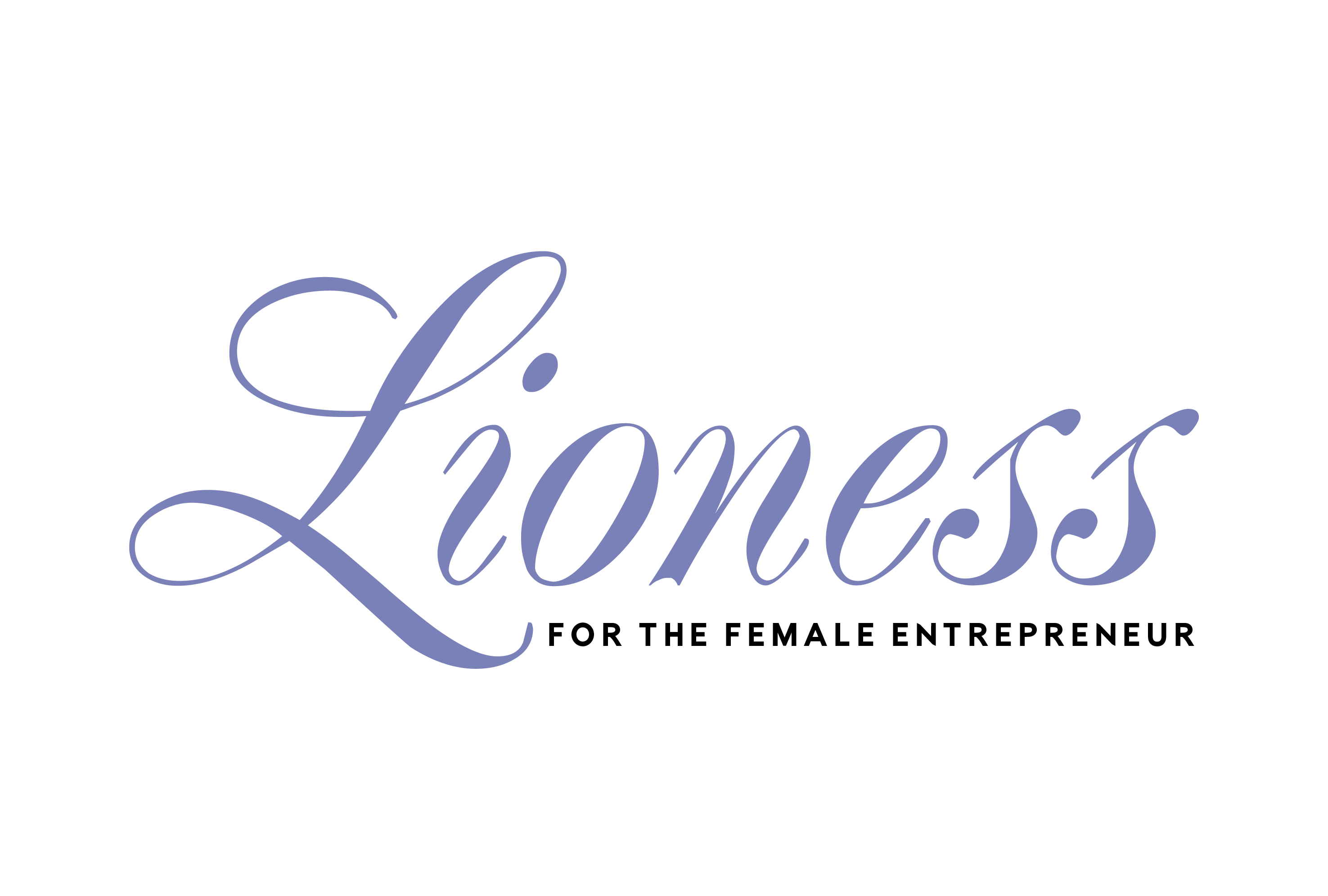It’s no secret that the past year has been a struggle for small business owners. Although the Paycheck Protection Program, instituted last spring at the beginning of the COVID-19 crisis, has helped to ameliorate the problem, troubles still remain. According to a survey conducted last year by the CBIZ Main Street Index, “nearly 85 percent of main street businesses have been impacted by the pandemic, with almost 15 percent experiencing severe impact.” Statistics from the U.S. Chamber of Commerce show that these trends have specifically hurt female business owners the most. As a result, many women have had to adapt to our new reality by pivoting their businesses to e-commerce platforms. There has been significant e-commerce growth this past year, with TechCrunch reporting that “the pandemic has accelerated the shift away from physical stores to digital shopping by roughly five years.”
Here at Lioness, we were curious about how entrepreneurs are pivoting to e-commerce during these tough times. What SaaS applications did they find helpful in the process? How were their businesses impacted by the change? We asked a group of entrepreneurs in a wide array of industries how they made the best of the current situation.
New Zealand native Vanessa McGowan is a successful, multitalented country musician and music career coach. A resident of Nashville, she is a founding member of the band Tattletale Saints and she has performed with acclaimed country artists such as Sugarland, Jennifer Nettles, and Brandy Clark.
Like many musicians who earn their livelihood through live performances, McGowan had to restructure her career to fit a socially-distant world. “With live music canceled in 2020, I pivoted my business to music education,” McGowan said. “And in August 2020, I launched Pro Music Guide, the complete guide to building a successful career as a professional musician.”
The business is still in its early stages, but already McGowan has produced quality content that aims to help musicians excel in the music industry. “Over the last six months we’ve released video lessons and how-to guides covering everything from performing, recording and releasing albums, to mental health in the music industry,” McGowan said. “Right now we’re in the final stages of creating the beta version of our first paid course.”
Tools/Techniques Used:
Squarespace: “[Squarespace] has been essential to quickly building a beautiful website with all the functionality I need to provide resources to my audience. We have a detailed homepage, blog for our how-to guides, video embeds for our lessons, marketing pop-ups and banners to drive traffic, and email list capture and management to encourage engagement.”
Go Live: “I used [Go Live] to buy a template to jump start our website design and significantly improve the overall quality of the site.”
Beacon: “[Beacon] was used to create the lead magnet for our mailing list.”
Canva: “[Canva] is without a doubt the most powerful tool in this business toolkit. I use the brand kit, templates and design features for all our posts, images, and resources and the simplicity and power of the program has allowed us to grow a cohesive brand world for the business without any formal design training. Creating mockups for books, web-pages, CDs, fliers have made it possible to bring to life and entice people with our online resources and using the brand kit has made it super simple to create a polished and professional look for every aspect of our business.”
Christina Appleton is the founder and CEO of Appleton Markets, a health food brand based in Los Angeles. A fourth-generation grocer who attended Harvard Business School, Appleton had been preparing to open last spring, when the pandemic hit. “As I launched my business last spring, I had to do a very quick pivot after spending the prior nine months building up sales channels in offices, co-working spaces, and small cafes–all of which went away just before launch,” she said.
Tools/Techniques Used:
Shopify:“Shopify is a very user-friendly tool that I had used before and I was able to switch my focus to putting up a good-looking and functional storefront in a short amount of time. I was able to use Shopify plug-ins to geo-fence my orders, as I was shipping frozen food products out and wanted to limit my shipping zones. I joined the Shopify for Startups program that really helped all of us new business owners as we navigated the pandemic. Over time I have been able to expand nationally, but without that help in the early days it would have been a disaster!”
Stacey Anderson is the owner of Sweet Treats Cookie Dough, a company that makes edible raw cookie dough in Snoqualmie, Washington. “We have a brick and mortar store but quickly needed to pivot to online during the pandemic,” Anderson said. “First we created a product we could ship easily–our edible cookie dough kits and cups…The holiday season was huge for us with shipping and it was all seamless because we had our technology in place.”
Tools/Techniques Used:
GoDaddy: “A quick and easy website builder.”
Shippo: “I quickly learned how to post products, do online shipping with Shippo, and create services, such as free local delivery. It saved our business for sure!”
Kathryn Alexander is the founder of Alexander Training, a personal training business in Austin, Texas. She described Covid as “a unique challenge” to her professionally because she prefers to only hold individual, in-person sessions. However, she had no choice but to begin implementing Zoom sessions. “I have grown from around 10 percent to 50 percent online clients since March 2020. It wasn’t intentional…it was a survival method for all of us,” Alexander said. “It gives me the ability to scale, to reach people in any town, and even my current clients who weathered COVID in another location.”
Tools/Techniques Used:
Train Heroic: “[Train Heroic] is my primary communication method with clients. I create and publish their entire training plan (lifting days, cardio days, running, biking, etc.) and they see how-to videos, text, and the sets, reps, and weight I plan for them. I have also created a group training that participants can sign up for through Train Heroic. It is created for people who are choosing to workout at home, but don’t want to compromise on results.”
Nellie High-Iredale is co-founder and president of High Realty Group, a luxury real estate group in San Diego. “The pandemic has catalyzed the need for a comprehensive digital marketing strategy for clients’ homes,” High-Iredale said. “Many people are buying houses from San Francisco and Los Angeles without ever seeing them in person.”
Tools/Techniques Used:
Facebook: “We structured our web design for social media algorithms and SEO. We added a privacy policy geared for the Facebook pixel to score higher on the ad’s best practices. Both the privacy policy and pixel increase our ranking quality during the bidding war for our ads. We go one step further with an industry analysis to generate a budget that will beat our competition during ad bidding.”
SEMrush and Pingdom: “Our team has a specialist in content writing. We use LSI, keywords, and long-tail keywords for our content and meta-tags. We use SEMrush and Pingdom to analyze our search ranking.”
“Our digital model includes landing pages hosted within our root domain. The use of one main domain helps increase lead generation and decreases overall cost per click-through per ad. The industry standard is to outsource their social media advertising to third-parties with landing pages that are not hosted within their primary domain. In contrast, we keep our experience within one root domain to track, qualify, and re-target possible clients.”
Dr. Allison Cain is the owner of Anchor, a health and fitness center in Georgina, Ontario, Canada, and GrowCo, an online postnatal rehab platform.
When the country went into lockdown, Cain and her husband had no choice but to temporarily close Anchor. She had had a baby a few weeks earlier and upcoming plans to teach seminars across the country. Now she had to find some way forward.
“I began building the in-person seminar into a virtual one,” Cain said. “I spent hours upon hours in between feeds, during nap time, and while holding a baby and wrangling 2-year-old building presentations, videos, voiceovers, Landing pages and doing marketing. I not only was bringing my course online, I was creating a brand new e-business that was about to expand beyond my imagination.”
Cain found that shifting to e-commerce brought unexpected benefits. “In a year that was so drastically flipped on its head, I went from mat leave to building a six-figure business in under six weeks,” she said. “By going virtual, I’ve been able to connect with health professionals around the world and grow my impact beyond my wildest dreams.”
Tools/Techniques Used:
“I used Canva for my presentation. I used PowerPoint for my voiceover. I used Rev to add subtitles to my presentation. I used Mailchimp for my landing page. I used Instagram to post pictures and content. I used Web of Words to build my website and for the copy. I used Thinkific to host my online course. I used Stripe as my payment process.”
How has your business changed since the pandemic began? Have you shifted more to e-commerce? What tools do you use to succeed?







Add Comment